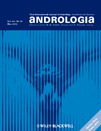Ameliorative effects of stinging nettle (Urtica dioica) on testosterone-induced prostatic hyperplasia in rats
Summary
The present study investigated the effects of stinging nettle (Urtica dioica L.) (UD) on benign prostatic hyperplasia (BPH) induced by testosterone. In vitro studies were conducted to assess the 5α-reductase inhibitory potential of UD. Two biochemical markers viz., β-sitosterol and scopoletin, were isolated and characterised in the extracts utilising High-performance thin layer chromatographic, FTIR, NMR and overlain UV spectral studies. Hyperplasia was induced in rats by subcutaneous administration of testosterone (3 mg kg−1 s.c.) for 28 days in all the groups except the vehicle-treated group. Simultaneous administration of petroleum ether and ethanolic extracts (10, 20 and 50 mg kg−1 p.o.) and isolated β-sitosterol (10 and 20 mg kg−1 p.o.) was undertaken. Finasteride was used as a positive control (1 mg kg−1 p.o.). Measurement of prostate/body weight ratio, weekly urine output and serum testosterone levels, prostate-specific antigen levels (on day 28) and histological examinations carried out on prostates from each group led us to conclude that UD can be used as an effective drug for the management of BPH.




